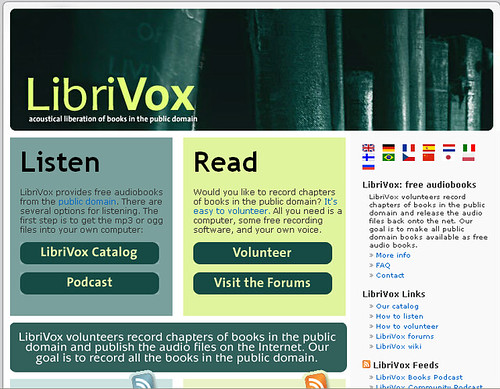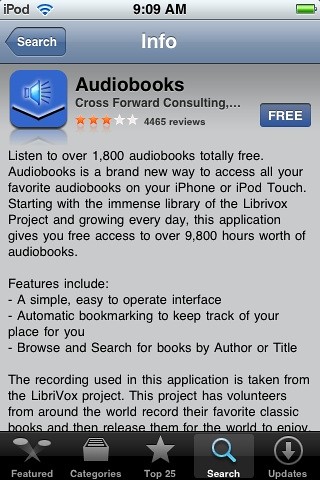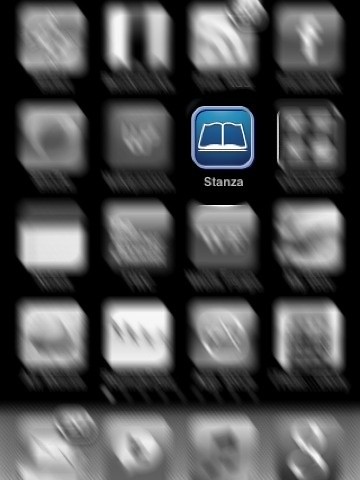I had an idea yesterday that sprung into my head yesterday that has gotten me a little excited and I thought I would share it here today. A couple of weeks ago I came across the
LibriVox website. LibriVox is a website/group attempting to make audio recordings of every book in the public domain. Anyone can volunteer to be a reader. All you have to do is record yourself reading a chapter of a book then upload it to their site. Books get collected into a podcast stream and then archived.

My first thought was that this could be a fantastic project for students. Students could be assigned to read chapters of books in the public domain and upload their recordings to LibriVox. This project would both promote literacy and community service since the students would ultimately be contributing to the greater good by contributing to this free directory.
This website got me thinking about projects like
Project Gutenberg which are attempting to digitize every book in the public domain and sites like the
Internet Archive who are trying to make all public domain content available free for anyone, not to mention
Google's initiative to digitize everything else including books and periodicals or the success of
Wikipedia. I live, work, and breath internet technology as a major part of my career but this continually amazes me. Just ten years ago I was in college and had to spend countless hours in the university library so I could have access to all the information that now fits in the palm of my hand.
The media center in the school where I work has a little under 2,000 books that students can read. On my iPod I have access to over 30,000 books just with Project Gutenberg alone. Why wouldn't every school want to have one of these? Why wouldn't every parent want each of their children to have one?
For the iPod touch there are two free apps particularly worthy of special note here: Stanza and Audiobooks. Stanza is a free book reader. From Stanza you can access an online catalog where you can download and read books from numerous sources both free and paid. Audiobooks gives you a direct link to the books in LibriVox's collection.

Now, when I was in high school my AP English teacher would assign us each week to go to the local college library and do research. This was great for students who lived within walking distance of a college library. However, thousands of students across our nation don't live anywhere near a library of that size or quality including students at the schools where I currently work. My thought is, a foundation could be established to provide isolated rural schools with labs of iPod Touches or labs of netbooks for use as a library resource that could be checked out like a book. In exchange for the lab, schools would commit to having students contribute to LibriVox via the project I described at the beginning of this post. This would promote literacy, grow the public archive of free public domain audiobooks, help bridge the digital divide, and bring tens of thousands of ebooks to libraries with otherwise limited resources.













